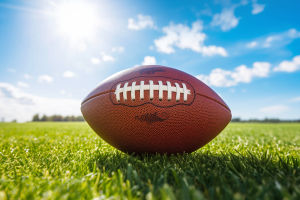Football is a game of skill, precision, and speed, but one often-overlooked factor in a player's performance is their choice of football boots.
The right pair of boots can make all the difference when it comes to agility, comfort, and injury prevention.
Whether you're playing on grass, artificial turf, or indoors, having the proper footwear helps you stay in control and perform at your best. In this guide, we’ll explore why football boots are so important, how they affect performance, and what to consider when choosing the perfect pair.
1. How Football Boots Affect Performance
Football boots are more than just footwear—they are a key piece of equipment that impacts a player's movement and technique. Here’s how they influence performance:
Grip and Traction: The studs or cleats on football boots provide grip on different types of playing surfaces, preventing slips and helping players make quick turns and sudden stops. Without proper traction, players may struggle to maintain balance, which can affect dribbling, passing, and shooting.
Speed and Agility: A lightweight and well-fitted pair of boots can enhance a player’s speed by allowing for faster acceleration and sharper movements. Some football boots are specifically designed for sprinting, with aerodynamic shapes and materials that reduce drag.
Ball Control: The design and material of football boots influence how a player interacts with the ball. Certain boots have textured uppers that improve grip, making it easier to control the ball during dribbling and passing. Midfielders and forwards often choose boots that offer better touch and accuracy.
By wearing the right boots, players can improve their overall game, gaining an edge over opponents and maximizing their potential.
2. Choosing the Right Football Boots
Selecting the right football boots depends on several factors, including the type of surface, playing style, and comfort. Here’s what to consider when choosing a pair:
Surface Type: Different playing surfaces require different boot designs. For example:
Firm Ground (FG) boots: Ideal for natural grass fields, these boots have molded studs that provide traction without digging too deep into the ground.
Soft Ground (SG) boots: Designed for wet and muddy fields, they have longer, removable studs that provide extra grip.
Artificial Ground (AG) boots: Made for artificial turf, these boots have shorter, more numerous studs to distribute pressure evenly.
Indoor and Turf Boots: For hard indoor surfaces, flat-soled or rubber-studded boots provide the best grip.
Fit and Comfort: A well-fitted boot enhances performance and reduces the risk of injuries such as blisters or foot pain. Boots should be snug but not too tight, allowing enough room for movement while providing ankle support.
Material and Durability: Football boots come in a variety of materials, including leather and synthetic fabrics. Leather boots offer a soft and natural feel but may require more maintenance, while synthetic options are lighter and more durable.
By selecting the right boots based on playing conditions and comfort, players can enhance their experience and minimize the risk of discomfort or injury.
Football boots are a crucial part of a player’s gear, influencing performance, comfort, and injury prevention. From providing the right traction and ball control to reducing injury risks, the right boots can elevate a player’s game significantly. Choosing boots that match the playing surface, fit well, and offer good support ensures a comfortable and efficient experience on the field.
Different Levels of Nike Superfly 10 Football Boots
Video: kimfootball


